

Today we’d like to introduce you to Sijia Chen.
“Rocks from other Mountains” is a composition of rock-shaped wooden panels featuring overlays of papercut infused media. The rock forms were inspired by the artist’s father’s drawings and photos of Queshi Mountain in her hometown of Shantou. The paper cutouts were created using unconventional materials, including copies of personal significance during Covid-19 from the Asian immigrant community, immigration forms, and commercial printouts of immigrant-owned businesses. The title is derived from the Chinese idiom “Rocks from other mountains can be used to shaped our jades,” which posits that people of foreign origins are capable of making contributions to their new environments.
Can you briefly walk us through your story – how you started and how you got to where you are today. You can include as little or as much detail as you’d like.’’
I come from a family with multi-generational roots in the creative arts. I was born and raised in Shantou, a small coastal city in southern China. I moved to Guangzhou as a teenager and lived in a dorm while attending an art academy, so change and independence was engrained at a young age. I then moved to the US for my graduate studies, and to expand my artistic perspective. As a global citizen, I am now a resident of Los Angeles and a first generation immigrant. I think it’s an interesting dichotomy that art is so entrenched in my family’s heritage, I am in a sense a steward of tradition, but on a personal and artistic level, I seek out change and new viewpoints, and challenge convention. While my art is contemporary and disruptive, it’s also intended to serve as a bridge across culture, time, and space.
We’d love to learn more about your work. What do you do, what do you specialize in, what are you known for, etc. What are you most proud of? What sets you apart from others?
I am a multi-disciplinary artist, my practice is focused on paper-based two dimensional works, and immersive three dimensional installations and public pieces. I’ve merged elements of Chinese paper cut folk art, and active and rigorous community engagement, into my creative language and process. My works have evolved into surveys of local heritage, while giving voice to under-represented groups in our communities.
I’m proud that my paintings and three dimensional works are representations of both my personal story and a diverse cross-section of cultures. They contain narratives that address subject matter that is salient and current. I’ve leaned into the myriad issues we face as individuals and a collective group, both internal and external, around immigration and acculturation, and as a result how we view each other and ourselves. The inclusion of local community members and organizations and their active participation in my creative process has had a transformative effect. It’s provided access to personal stories that have inspired, saddened, and uplifted me.
I’ve been commissioned to produce public works for airports, train stations, public parks, and government buildings. A common thread in my public works is the articulation of bespoke local cultural elements. This aspect of each work is what also differentiates and gives them a singular quality.
In my recent paintings, I’ve been working with local communities to collect materials of personal significance, and using them as media. Family portraits, immigration forms, menus from restaurants owned and/or operated by immigrants, advertisements from magazines and publications are all present. By applying papercut techniques on these materials, they transform into houses, roads, vehicles, trees, other objects, which I then merge and overlap to form mountains, bodies of water, and portraits. The end result are expansive compositions of landscapes and intimate personal profiles, filled with narratives, color, and depth.
Has it been a smooth road? If not, what were some of the struggles along the way?
It’s been an incredibly rich, challenging, and awakening road to today. Navigating life as an artist is a remarkable and ambitious endeavor to begin with, and to be an immigrant added an additional element of uncertainty, and at times solitude that has had an immutable effect. It’s a perpetual process of forming, reshaping, and balancing my voice and self-perspective. An essential source of inspiration that encapsulates how I feel is an idiom from the traditional Chinese literary work the Book of Ode, which states “Climb the mountains and cross the rivers,” and is a reference to a long and challenging yet potentially rewarding journey.
I’m drawn to individual stories, and the specific anecdotes and details – where we’ve been, the people we’ve left behind and brought into our lives, the dreams we have, etc. I believe by sharing and presenting, it allows us to forge broader connections, and to empower one’s sense of self-worth. For Asians living in America, we are underrepresented in media and other institutional pillars. Art that strives to bridge this disparity can play a part in broadening the focus and content of the dialogue that we’re having. We leave less room for misinterpretation, ignorance, and xenophobia, and in its place fill it with awareness, inclusion, and compassion.
At the same time, I feel it’s essential to continue asking ourselves and responding to the question of what does it mean to be an Asian, and specifically for me as an artist and Asian woman, living in America? In this post-COVID world, I’ve focused on the growing mistreatment, resentment, and misconception of Asians, and how it colors past experiences, and our mindset going forward. I’m conscious of the specific and at times contradictory stereotypes applied towards us, e.g. model minority, passive and non-threatening, the perpetual foreigner, increasingly influential exporter/tastemaker of culture, growing presence and power over global socioeconomic issues. Living in and as this amalgam of labels and phenomena, there are some clear takeaways that we can probably agree on, and others I’m not sure will ever be resolved. All of this informs my artwork, from conceptual development, execution, to evolution.
Where do you see your industry going over the next 5-10 years? Any big shifts, changes, trends, etc?
I think a more democratic, accessible, and representative ecosystem is important. Social media has been great for amplifying our ability to connect and share our work, but what it didn’t necessarily change is having a bilateral dialogue with the public, as currently structured it’s more of a unidirectional flow of thought and information, although I can see change is not far off. What also hasn’t changed is when that discussion and information exchange takes place, it’s always after the work is put out there for consumption. And that’s true of art as well. It is overwhelmingly the manifestation and expression of individual thought, and we then evaluate and discuss afterwards. But why can’t art evolve just as other parts of our culture and existence have, and shouldn’t it?
The trend we’re seeing with public art projects is that by design they’re not just actively engaging, but also requiring community participation. I hope and expect this shift will continue as artists, agencies, stakeholders, and the public continue to see the merit in this process. What has been a personal revelation through my public projects is that I can be the originator of ideas, while also serving as a facilitator of informed discourse and community engagement, and an advocate for representation. The artwork’s concept is my sole responsibility, but to varying extents I am placing its contents and execution in a public trust.
I was fortunate that through papercut, I discovered a vehicle to contribute to this movement. Papercut is a dynamic platform, it can present figurative images, text, and patterns. It’s readily available and familiar to all of us, it’s not some abstract concept to cut paper or design cutouts to create a visual form. Through organized events and workshops as part of a holistic project plan, we’re able to bring people together to cross-conceptualize and collaborate. And through the incorporation of personal materials and subject matter, an individual or group has an opportunity to express their views and preserve them in perpetuity for all to see. Ultimately, public works are more than just artistic compositions, they are the expressions and culminations of community movements.
Contact Info:
- Website: www.sijiachen.com
- Instagram: https://www.instagram.com/sijiachenart/
- Facebook: https://www.facebook.com/sijiachenstudio
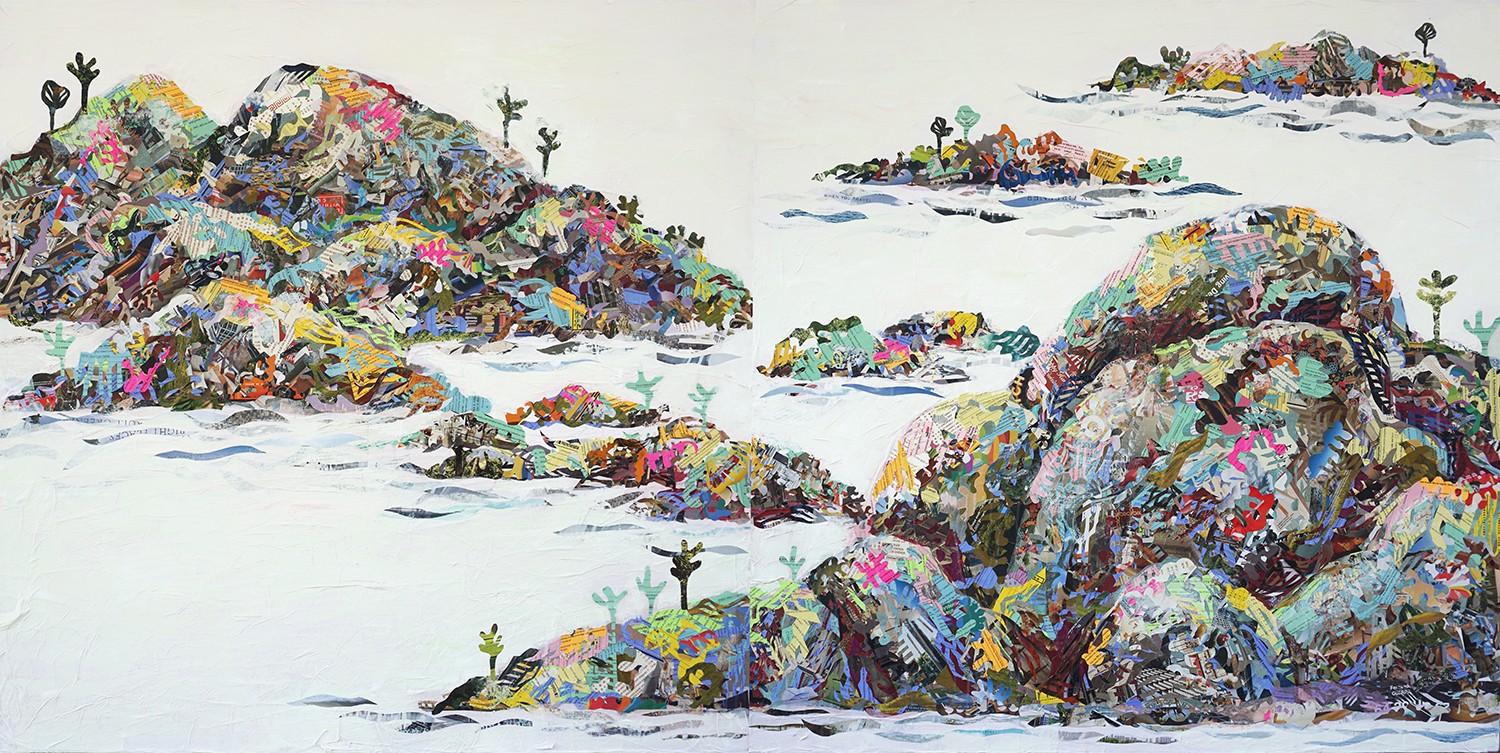
Twin Peaks, 2021, Immigration documents, advertisements, and paint on canvas, 40×80 inches
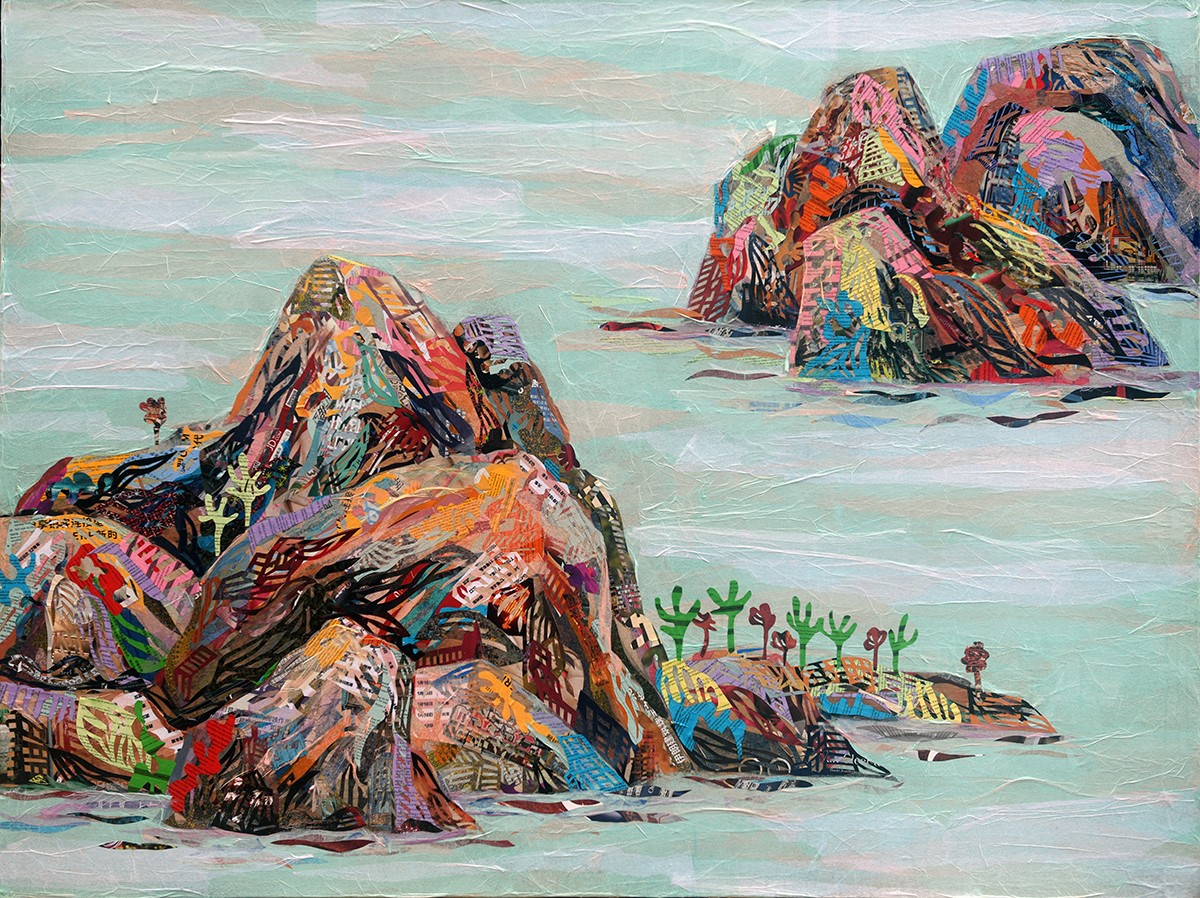
A Far Glance, 2020 , Immigration forms, magazines, and news printouts on canvas , 47×63 inches
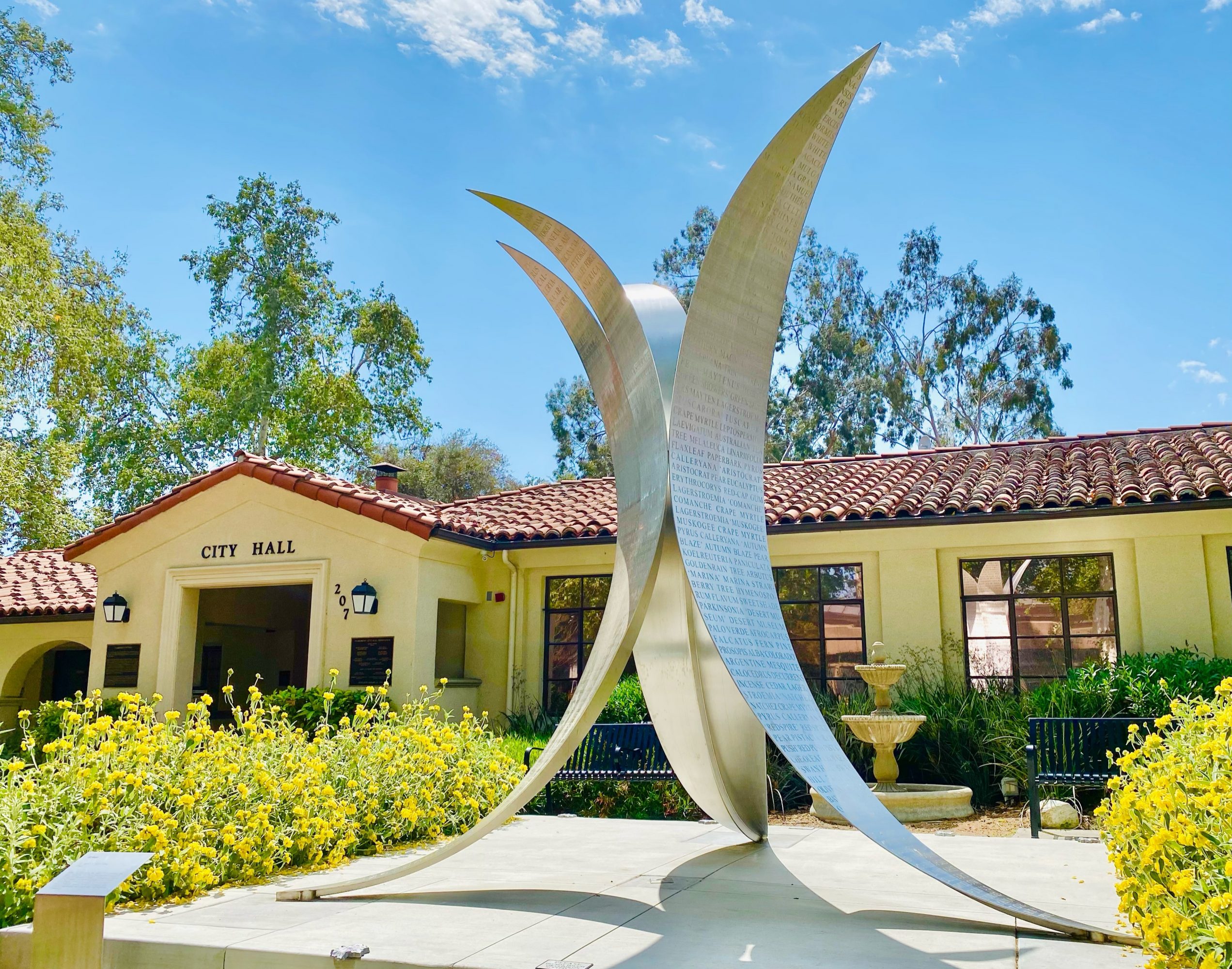
Arbor, Claremont City Hall, 2018 Stainless steel, 11’ height, 11’ width, 11’ depth
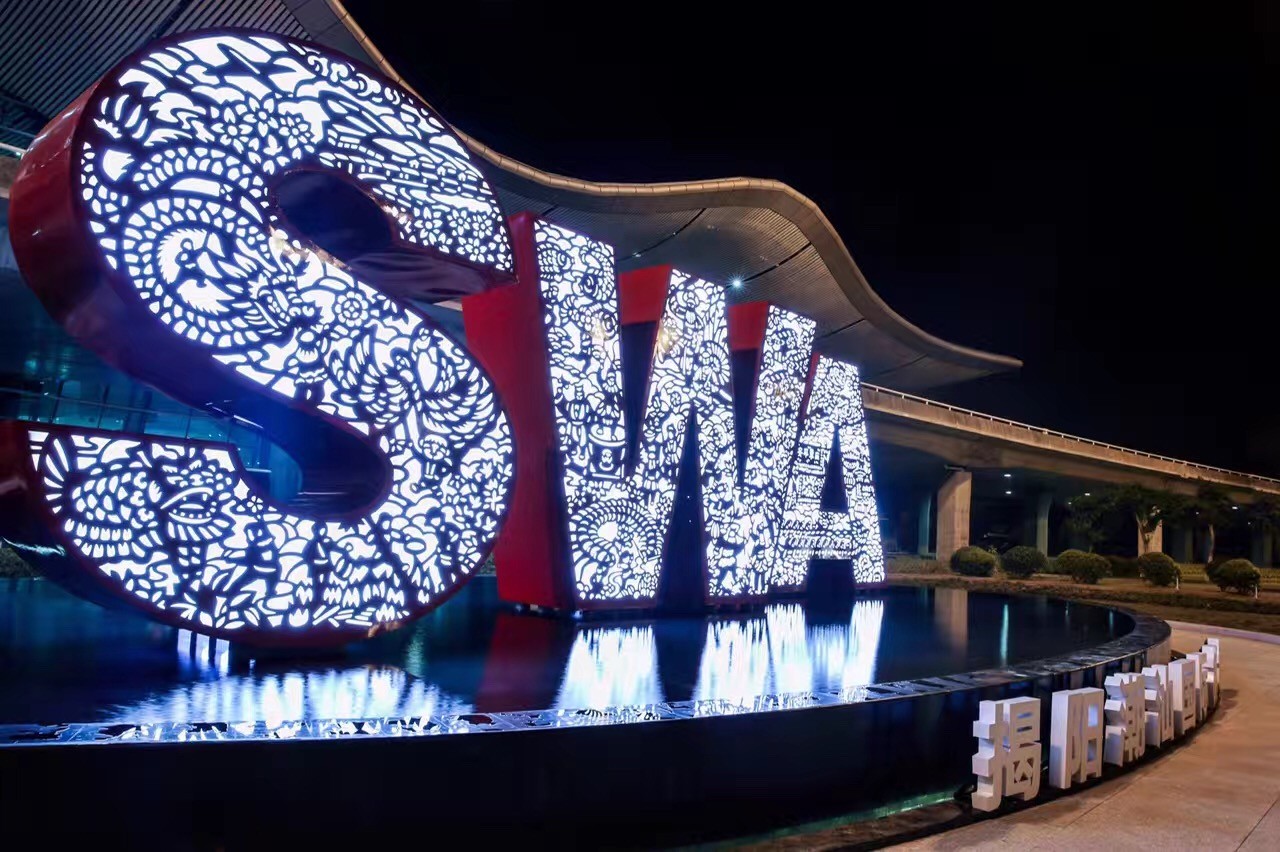
SWA, Jieyang Chaoshan International Airport, 2017 Stainless steel, LED light box, concrete, water 15′ height, 33′ depth, 64′ length
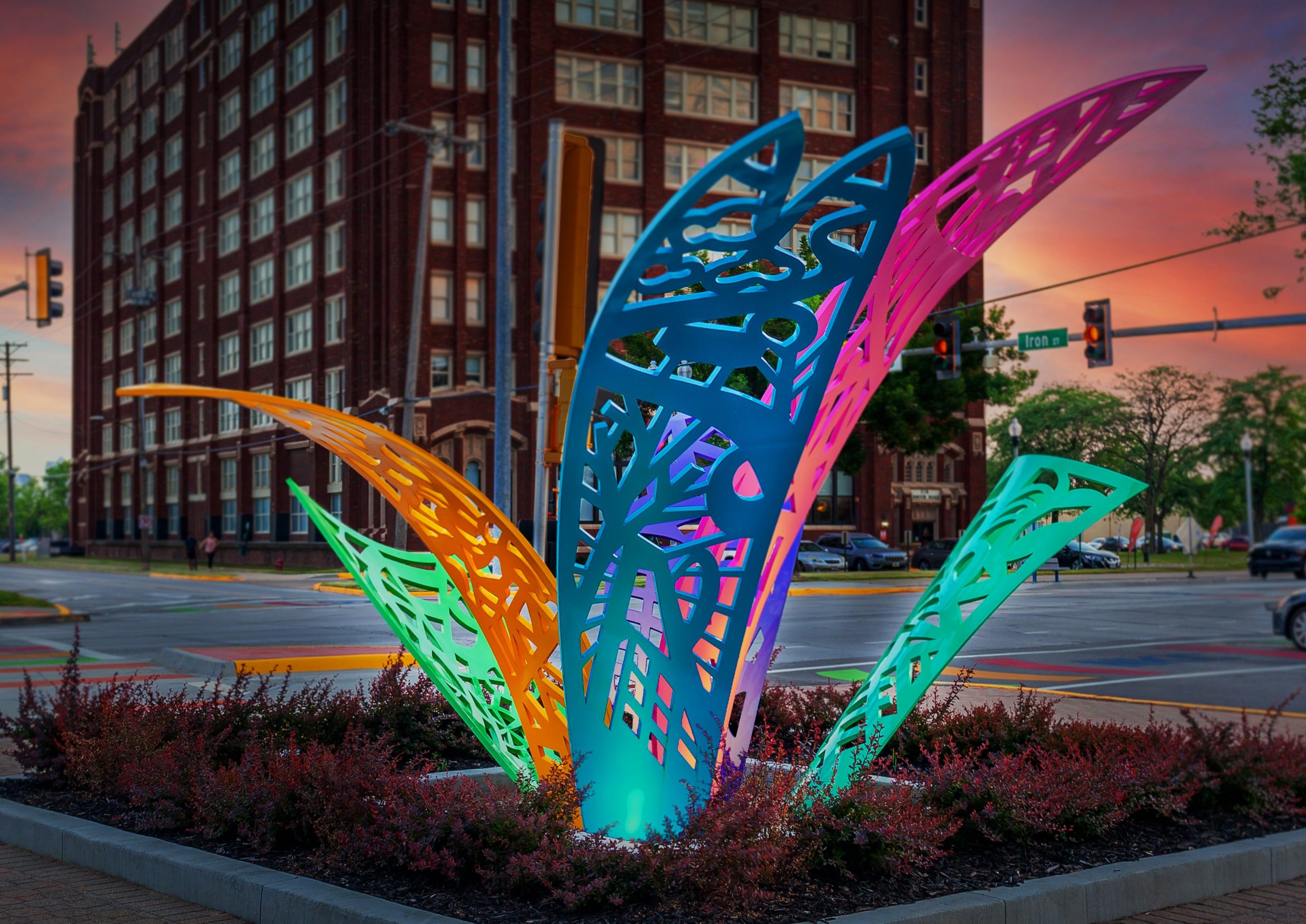
Bloom, North Kansas City, Stainless steel, 13’ height, 14’ width, 13’ depth

A Great Disruption, 2022, Materials of personal significance during Covid-19 from Asian immigrant community, immigration forms, magazines, photographes, restaurant menus, paint on canvas. 6×13 feet
 Image Credits
Image Credits
Sijia Chen Studio











